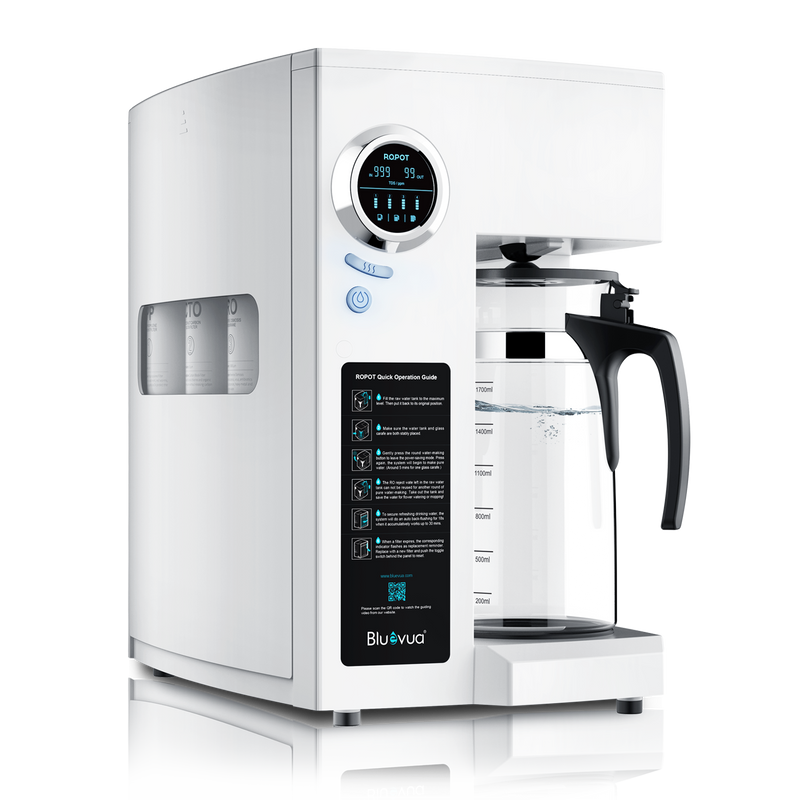Unlocking Pure Water: Discover the Secrets of Reverse Osmosis Filters!
In our quest for clean and safe drinking water, reverse osmosis water filter systems have emerged as a popular solution for both homes and businesses. As concerns about water quality continue to grow—stemming from pollutants, contaminants, and aging infrastructure—these systems offer a reliable means of ensuring that the water we consume is free from harmful substances. The significance of having access to pure water cannot be overstated, as it plays a crucial role in our health and well-being. In this article, we will explore the workings of reverse osmosis systems, the benefits they offer, and the various types available to suit different needs.

Understanding Reverse Osmosis: How It Works
To grasp the effectiveness of reverse osmosis water filter systems, it's essential to understand the scientific principles behind them. Reverse osmosis (RO) is a water purification process that uses a semi-permeable membrane to remove ions, molecules, and larger particles from drinking water. In essence, the system works by applying pressure to the water, forcing it through the membrane that only allows water molecules to pass while blocking contaminants. This process results in clean, purified water on one side and concentrated contaminants on the other. A typical reverse osmosis system consists of several components, including pre-filters to remove larger particles, a reverse osmosis membrane, and post-filters for additional purification. Together, these components function seamlessly to deliver high-quality water suitable for consumption.
The Filtration Process
The filtration process of a reverse osmosis system is divided into several stages, each designed to enhance the purity of the water. Initially, pre-filters capture sediment and chlorine, which can damage the RO membrane. Next, the water passes through the reverse osmosis membrane, where the majority of impurities, including heavy metals, salts, and bacteria, are removed. Finally, post-filters, often carbon-based, polish the water, improving its taste and removing any residual odors. This multi-stage approach ensures that the water is not only free from harmful contaminants but also tastes fresh and clean.
Benefits of Reverse Osmosis Water Filter Systems
The advantages of using reverse osmosis water filter systems are numerous. For starters, one of the most noticeable benefits is the improved taste of the water. Many users report that water treated with an RO system tastes significantly better than tap water, which can often contain chlorine or other off-flavors. Furthermore, the health benefits are compelling; reverse osmosis systems effectively remove contaminants such as lead, arsenic, and nitrates, making the water safer for consumption. Additionally, using an RO system can be more cost-effective in the long run compared to buying bottled water. With a reverse osmosis system, you can enjoy a continuous supply of purified water without the environmental impact of plastic waste. Friends of mine who have switched to RO systems often share how they no longer feel the need to purchase bottled water, saving both money and reducing their carbon footprint.
Types of Reverse Osmosis Systems
When exploring reverse osmosis systems, it's essential to understand the different types available on the market. Under-sink models are popular for household use, installed directly beneath the kitchen sink and providing purified water through a dedicated faucet. Countertop systems offer a more portable solution, ideal for those who may not want a permanent installation or who live in smaller spaces. Whole-house systems, on the other hand, are designed to treat all the water entering a home, ensuring that every tap dispenses clean water. Each type of system serves various needs and preferences, making it crucial to assess your specific requirements before making a decision.
Key Takeaways on Reverse Osmosis Systems
In summary, reverse osmosis water filter systems play a vital role in ensuring access to clean and safe drinking water. By understanding how they work, the benefits they provide, and the types available, individuals can make informed choices that align with their water quality needs. Whether you are concerned about contaminants in your tap water or simply want to enhance the taste of your drinking water, exploring reverse osmosis options may be a step towards a healthier lifestyle. As we navigate the complexities of water quality, it is crucial to prioritize our health and well-being by investing in effective filtration systems that deliver pure, refreshing water.






Comments